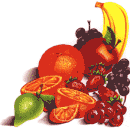 A readily accepted fact is seed-only diets lack the proper nutrition for optimum health and life longevity in birds.There are countless variations and modifications of base diets, most of which are heartily recommended, as well. The recipe I personally use and recommend contains wholesome ingredients such as whole grain brown rice, pasta, legumes, a variety of mixed veggies (frozen), and a natural source of iodine through granulated kelp granules. These key ingredients supply a bounty of vitamins, minerals, complex carbohydrates, as well as protein, antioxidants, bioflavonoids, and phytochemicals. The latter three mentioned are known for cancer prevention.
A readily accepted fact is seed-only diets lack the proper nutrition for optimum health and life longevity in birds.There are countless variations and modifications of base diets, most of which are heartily recommended, as well. The recipe I personally use and recommend contains wholesome ingredients such as whole grain brown rice, pasta, legumes, a variety of mixed veggies (frozen), and a natural source of iodine through granulated kelp granules. These key ingredients supply a bounty of vitamins, minerals, complex carbohydrates, as well as protein, antioxidants, bioflavonoids, and phytochemicals. The latter three mentioned are known for cancer prevention.
Although such a base diet is key for all birds, I especially believe in its benefits offered to breeding and weaning chicks. My own breeders, (when I was breeeding), greedily consume my cooked product to feed the brooding hen, and eventually in feeding their chicks.
Rice is an easily digested whole food source, and regurgitation is accomplished with little effort. It has no digestive inhibitors, making digestion more thorough and complete, and prevents the formation of gas in the intestines. The rice bran, or husk, is broken down into short-chain, fatty acids by the intestinal bacteria.
Proteins are made up of amino acids, totalling around 22 of them. Amino acids are vital for growth and the repair and maintenance of body tissue. They also play a key role biochemically, and are the basis of many hormones, enzymes, antibodies, neurotransmitters, and carriers of oxygen, fats, and other substances within the blood. Furthermore, vegetable proteins contain additional complex carbohydrates which are the main fuel for the body, and play a small part in the structural basis of DNA and other important molecules.
Complex carbohydrates are “slow-releasing”, providing sustained energy over a longer period of time.
Vitamins have a biochemical function and are needed in conjunction with enzymes to allow chemical reactions within the cell to proceed. They help with the release of energy from nutrients within the body. Other functions are to balance hormone levels, boost the immune system, strengthen skin and connective tissue, protect arteries, assist in brain function, and in the transmission of nerve impulses, to name just a few!
Minerals, as with vitamins, are essential for just about every process in the body. Some minerals become incorporated into body structures, such as calcium, magnesium, and phosphorous, which are found in the bones. Some, such as magnesium, zinc, and copper, play an essential role in metabolism. Others, such as iron, have very specific functions, as in the structure of hemoglobin molecules. As with vitamins, many of these minerals are “co-workers,” and the absence of one, severely disrupts the functions of other minerals, which in turn ultimately disrupts the body’s metabolism.
Oxygen releases the energy supplied by food. Oxygen is a chemical, and if not regulated, produces too many “oxidized” molecules in the body. Oxygen reacts readily to “oxidize” molecules in its vicinity. If nothing is available to control this, many reactions can occur in which the oxidized molecules, now noted as “free radicals,” become unstable. Antioxidant substances keep damage to a minimum. Antioxidants are substances which retard, or prevent deterioration, damage, or destruction caused by oxidation.
Fruits, veggies, seed, nuts, and whole grains, contain a host of antioxidants. If there are abundant amounts of high-energy molecules, essential nutrients, water, and antioxidant enzymes, cell damage is kept to a minimum. If they are missing, cell damage, aging and disease will follow.
Another group of substances which play a part in nutritional science, are known as phytochemicals. Phytochemicals are closely related, and sometimes merge with, antioxidants. They play an important role in regulating the hormonal, or endocrine, and immune systems, helping to prevent disease. They are biologically active compounds found in foods.
Bioflavonoids are also present. There are over 500 compounds, and they increase the potency of antioxidants and maintain cell membranes, especially those lining blood vessels and collagen. All veggies are densely packed with bioflavonoids.
A base diet is just what it implies: a base on which to build upon, or around. When served with dark-green leafy veggies, such as kale or romaine, along with a fruit, preferably apple, you are assured of a nutritionally complete diet.
I heartily endorse apple as the accompanied fruit. This is because apples contain pectin, a chelating agent, which helps prevent heavy metals absorption in the gut. It also helps prevent the build-up of cholesterol and helps eliminate it from the body. Pectin also plays a part in balancing blood sugar levels.
Cooking and producing a base diet is very time consuming and takes hard work. If you have the necessary time it demands, go for it. It’s a labor of love, indeed!
Feeding wholesome, nutritious foods helps ensure many years of good health to birds. Anyway you choose to go, preparing it yourself, or purchasing one already made, shows the true extent you are willing to go for the love of your bird!

